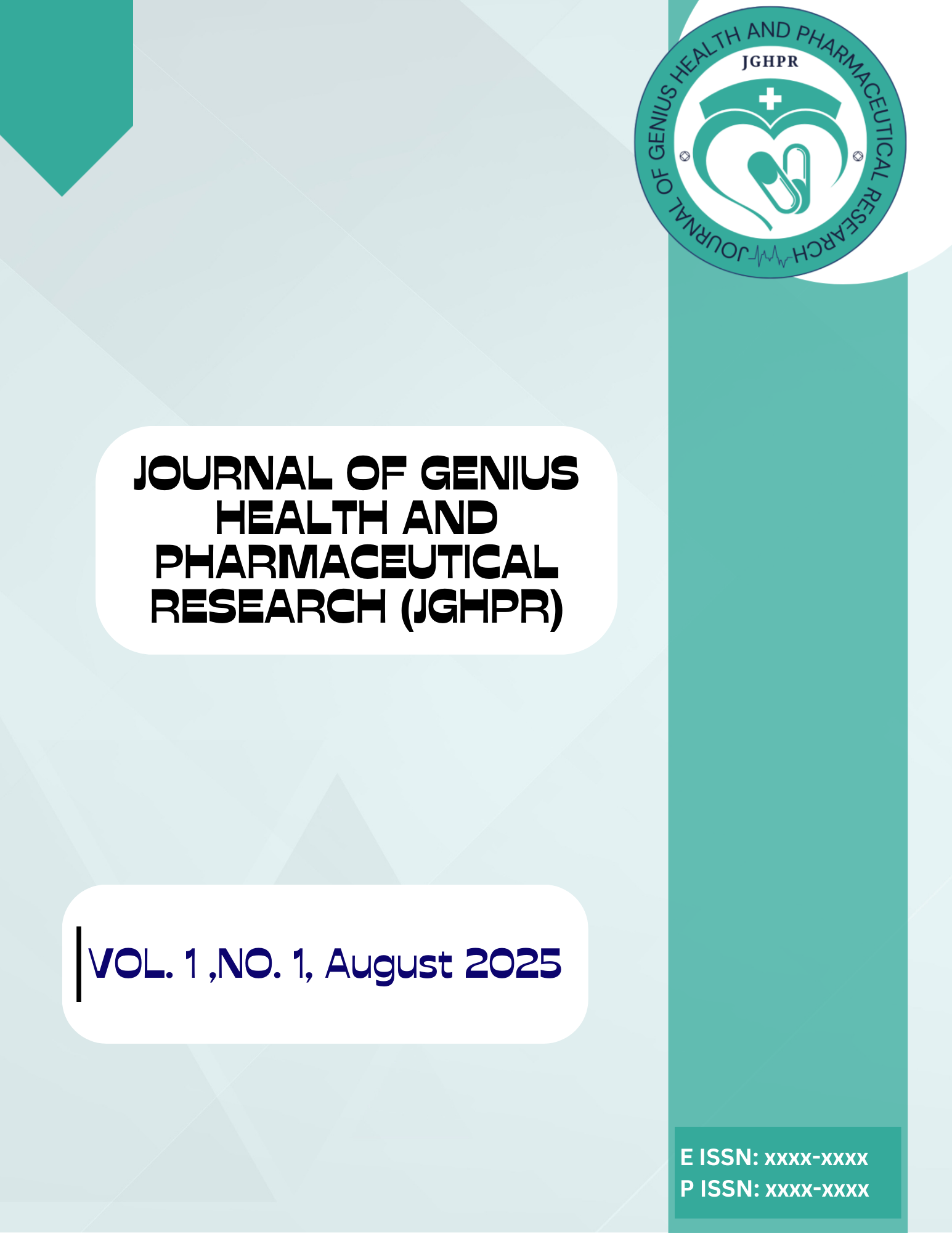Abstract
Background: Ischemic stroke accounts for approximately 87% of all stroke cases, making it the most prevalent subtype compared with hemorrhagic stroke. The Indonesian Neurological Association recommends the use of antihypertensive therapy in patients with ischemic stroke.
Purpose: This study aimed to quantify the utilization of antihypertensive drugs using the Anatomical Therapeutic Chemical/Defined Daily Dose (ATC/DDD) methodology in ischemic stroke inpatients at Koja District Hospital, Jakarta, between January and December 2022.
Methods: A descriptive, retrospective design was employed, reviewing the medical records of 114 ischemic stroke inpatients who met the inclusion criteria. Data collected included sociodemographic characteristics, antihypertensive drug utilization, and DU-90% profiling. Data analysis was performed using Microsoft Excel.
Results: Over the study period, the total length of stay was 633 patient-days. The highest consumption in DDD/100 patient-days was observed for amlodipine (57.78), followed by captopril (27.99), candesartan (13.14), and ramipril (4.36). Other agents showed lower levels of utilization. The DU-90% segment consisted of amlodipine, captopril, candesartan, and ramipril.
Conclusion: Amlodipine, captopril, candesartan, and ramipril were the primary drugs within the DU-90% utilization segment. These findings provide important insights for formulary management and rational drug use in ischemic stroke therapy.
References
Vogels AGC, Crone MR, Hoekstra F, Reijneveld SA. Comparing three short questionnaires to detect psychosocial dysfunction among primary school children: randomized method. BMC Public Health. 2020;9:489.
Vells T. Language for life [PhD thesis]. University of Life; 2015.
Parker G, Roy K. Adolescent depression: A review. Aust N Z J Psychiatry. 2011;35:572-580.
Dwee D, Dion HB, Brown IS. Information behavior concept: A basic introduction. University of Life Press; 2022.
Schnase JL, Cunnius EL, editors. Proceedings from CSCL '95: The First International Conference on Computer Support for Collaborative Learning. Mahwah, NJ: Erlbaum; 1995.
Peterson SJ, Bredow TS. Middle range theories: Application to nursing research. Philadelphia: Lippincott Williams & Wilkins; 2020.
Hybron DM. Philosophy and the science of subjective well-being. In: Eid M, Larsen RJ, editors. The science of subjective well-being. New York, NY: Guilford Press; 2008. p. 17-43.
Gilliland AL. A grounded theory model of effective labor supported by doulas [dissertation]. ProQuest Dissertations and Theses; 2020. (UMI No. 3437269).
Smith J, Brown L, Green M. Drug interactions in chemotherapy. J Clin Oncol. 2020;38(15):1762-1769.
Williams R, Patel H, Jones K. Novel drug delivery systems in cancer therapy. J Pharm Sci. 2019;108(2):456-465.
Johnson D, Miller P, Adams J. Advances in pharmacogenomics. Pharmacol Rev. 2018;70(3):348-367.
Taylor S, Martinez F, Gomez A. Biopharmaceutical innovations. Biotechnol Adv. 2017;35(4):698-712.
Wang Y, Li X, Liu Z. Herbal medicine in the treatment of cancer. Chin Med J. 2016;129(10):1178-1183.
Brown C, Lee J, Scott P. Clinical trials and new drug approvals. Br J Clin Pharmacol. 2015;80(5):879-889.
Patel V, Singh R, Kumar A. Nanotechnology in drug delivery. Int J Nanomedicine. 2014;9:2345-2356.
Harris P, Wang R, Smith T. Efficacy of new antibiotics. J Antimicrob Chemother. 2013;68(7):1505-1512.
Thompson J, Moore C, White R. Immunotherapy in autoimmune diseases. J Autoimmun. 2012;39(1-2):1-9.
Evans A, Blackwell G, Turner D. The role of biomarkers in personalized medicine. Clin Chem. 2011;57(5):668-674.
Zhang Q, Zhao L, Zhang J. The impact of biosimilars on healthcare. Lancet Oncol. 2010;11(10):962-967.
Lewis S, Fisher K, Taylor M. Pharmacoeconomics in the 21st century. Value Health. 2009;12(6):837-842.
